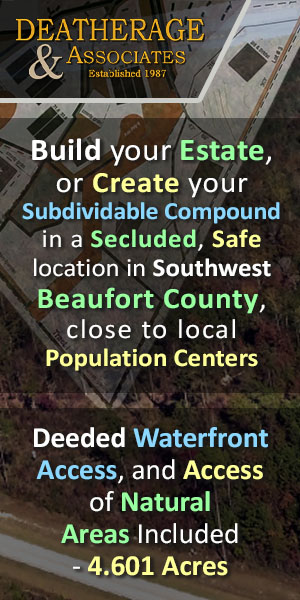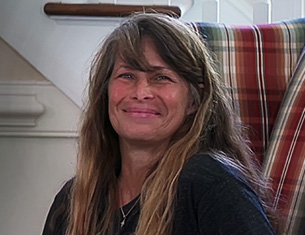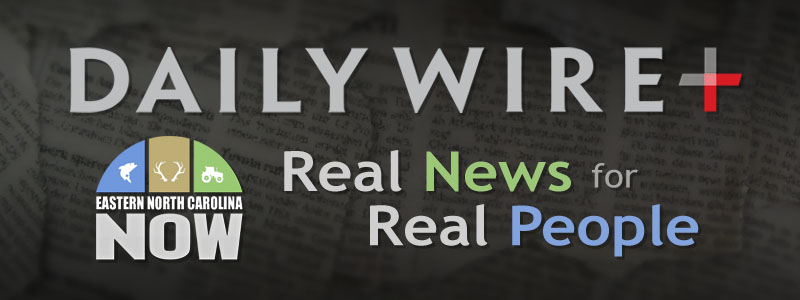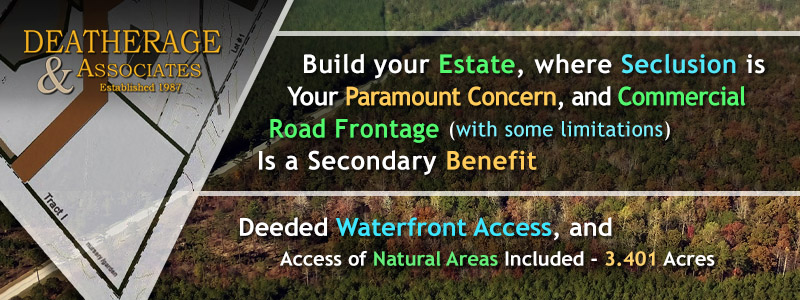The First Amendment Guarantees ALL Freedoms, including a Truthful Press
Remarks by President Trump in a Briefing on Wildfires | McClellan Park, CA
The yellow is our (inaudible), and then that 3 percent - you can't really see - it's scattered out here; that's the state (inaudible).
But what we have showing here is the ownership and then the fires that we're currently fighting, all the way from - down near the Mexican border within eight miles of the Mexican border, all the way into Oregon. So we got 1,000 miles spread between these fires. We have about - in order to put a line around these fires, with all the partnership we were talking about, we have to cut lines - scrape a line in the ground from here to Chicago. So it's a lot of dirt we have to move.
THE PRESIDENT: And why is that? Why are you doing that?
MR. PORTER: You have to put a line between the green and the black in order to put a fire out.
THE PRESIDENT: Really?
MR. PORTER: We do.
So what we're seeing is: In the south here, and in around 2000, we had beetle kill that caused large fires - the Cedar Fire, the (inaudible). Huge fires in 2000. In the 2010s, through the (inaudible), massive beetle kill in this area and large fires (inaudible).
THE PRESIDENT: Would those trees have died anyway from the beetle kill?
MR. PORTER: They die from beetles, from drought.
THE PRESIDENT: So they were largely dead, or the area was largely dead in terms of the trees?
MR. PORTER: They die from the beetle kill, and now they're being burned up by the fires.
Now we're also seeing -
THE PRESIDENT: Do you view that differently? When the trees are dead and the whole area - because I know the beetle kill has been terrible.
MR. PORTER: Yes.
THE PRESIDENT: So do you view that differently? And now you're going to be clearing it or doing whatever
you're going to do?
GOVERNOR NEWSOM: A hundred and sixty-three million. So it's - boy, it's a hell of a chop, right, to start clearing that out.
THE PRESIDENT: But those trees are dead and, therefore, they're very flammable, very explosive.
MR. PORTER: They are. They are.
And so then we (inaudible) all the (inaudible) forests - the Redwood region. It doesn't burn. More than a few hundred acres on occasion. But this year, we have 85,000, plus almost 60,000, plus these fires are getting into Redwood as well. We're going to have over (inaudible).
THE PRESIDENT: So why is - because of the thickness, the power of tree? Why aren't they burning?
MR. PORTER: They have bark that's about two feet thick.
THE PRESIDENT: And they're very wet.
MR. PORTER: And they're very much - they're very wet. They're very resilient to fire.
THE PRESIDENT: Are you losing some Redwoods or almost none?
MR. PORTER: Some Redwoods are dying, but most of them will be okay. It's everything that's getting (inaudible).
THE PRESIDENT: No kidding. That's something. I never heard that before.
So, with time, they could go, but the fact is they don't go with the fires. That's a fantastic -
MR. PORTER: Yeah, they're 2,000 years old in that area.
THE PRESIDENT: That is so incredible.
GOVERNOR NEWSOM: It's incredible to see.
THE PRESIDENT: Think of that. Yeah.
MR. PORTER: So that's kind of the landscape -
THE PRESIDENT: So your giant Redwoods are where? What area? The giant Redwoods.
MR. PORTER: So we have coastal Redwoods and then we have giant Sequoia, which is - they're the biggest (inaudible) of a tree.
THE PRESIDENT: And they're in good shape?
MR. PORTER: They're getting burned, but they will also survive. Those ancient trees will survive. But this fire down here, the (inaudible) complex is -
THE PRESIDENT: Will the bark regenerate on the outside, eventually?
MR. PORTER: The bark will continue to accumulate on the outside, and then the tree will continue to (inaudible).
THE PRESIDENT: Do you see a big difference?
MR. PORTER: Yes.
THE PRESIDENT: Will that change with time, where you don't see it? Or will you always know there was a fire there?
MR. PORTER: We'll always know there was a fire.
THE PRESIDENT: You'll always know, on the Redwoods.
MR. PORTER: They get scars over time.
THE PRESIDENT: Yeah.
MR. PORTER: And that's how we can tell -
THE PRESIDENT: Well, that in itself is a shame, when you think, right? That in itself is a shame, so. That's an incredible story. Thank you very much. Appreciate it.
Mark, would you like to say something?
MR. GHILARDUCCI: Well, Mr. President, first of all, thanks for being here. The term I use here is a term I use - "one team, one fight" - and it really does represent everything that you're seeing today. All the agencies that we're working with - before, during, and then after these disasters occur - I couldn't be more pleased. Our partnership with FEMA has been fantastic.
Right now, you know, as you mentioned, you've provided a major disaster for 11 counties within the state - different categories. And many of the people who have lost things have already started to register with FEMA, and that's been really a beneficial support to us.
THE PRESIDENT: Right. Right.
MR. GHILARDUCCI: So we appreciate that.
And the mitigation is really, really critical. You know, since 2017, we've done 94 projects, about 138 million dollars' worth of mitigation focused on fire prevention. It's a whole variety of different kinds of projects and programs within the wild land and people who we call the WUI, the Wildland-Urban Interface, to try to buy down the amount of impacts that these fires are occurring. And so we really appreciate that. All these new fires and this new declaration provides additional mitigation funds, which we will turn back around and continue to support the mitigation efforts.
THE PRESIDENT: How many individual fires do you have?
MR. GHILARDUCCI: I think we have, right now, actively, about 29 major fires.
THE PRESIDENT: So when you add them all up, this is about as big as it's ever been, right?
GOVERNOR NEWSOM: Yeah, I mean, 1,100 just since - I mean, think about that: 1,100 fire starts in the last 29 days - 29 complexes (inaudible).
THE PRESIDENT: So we all put them out - most of them were put out early?
GOVERNOR NEWSOM: We're making tremendous progress. The largest - the three largest, they're still active. Two of them are substantially contained.
THE PRESIDENT: Yeah.
GOVERNOR NEWSOM: The August, we still have a lot of work to do.
MR. CROWFOOT: And, Governor, if I could, just for the President, this is a bar chart that shows the acreage burned over the years. The top bar is this year. And the real scary part, Mr. President, we're only partway through the season.
THE PRESIDENT: Right. Right.
MR. CROWFOOT: The worst fire that you obviously visited, the Paradise fire, happened in October.
THE PRESIDENT: That was a bad one.
MR. CROWFOOT: So we're still staring down the barrel of worst fires potentially this year.
THE PRESIDENT: We were there together. Let me ask you, in Paradise - so did they have - it was like a blowtorch, right? Because the winds are 85 miles an hour. Nobody has ever seen anything like that. So that was different. Has there ever been anything like that in terms of the power and the heat?
MR. CROWFOOT: Well, I'll tell you this, sir: The Creek fire that the Sheriff evacuated folks from is generating some of the worst heat in Fresno and Madera counties that's ever been experienced, creating its own weather cloud that almost looked like a mushroom cloud.
THE PRESIDENT: I see. So that creates the heat also. That's incredible.
Would you like to say something, please?
SHERIFF MIMS: Yes, sir. Well, thank you, Mr. President, for coming and visiting California. And behalf of Fresno County, who I'm speaking for today, I want to thank you for your visit.
Beginning on September 4th, our Creek fire started, and it impacted not only the residents, but utility infrastructure that services California.
THE PRESIDENT: That's right. That's right. That's a big problem isn't it, huh? How is that - how is that going?
GOVERNOR NEWSOM: Progress. We got the largest utility in the United States, PG&E, out of bankruptcy in record time with -
THE PRESIDENT: Good.
GOVERNOR NEWSOM: - with firm commitments to make sure they never walk back down that path.
THE PRESIDENT: Good. That's a lot of - that's a lot of utilities that are burning up though.
Go ahead.
SHERIFF MIMS: So our fire, right now, is over 200,000 acres, and it's really more than any single, local government can take care of, and so we are asking for assistance. We've already made some progress today by getting ahold of FEMA, and I made a request from Pete to have a representative right in our command post, and we're making that happen. So that's going to be very valuable for us.
Not only has it impacted our woodland, but the families that have lived there for generations in that area. The Big Creek hydroelectric power generating system that served California for over 100 years is destroyed, as well as the people that lived there and their homes that operate that system.
One major concern in the future is erosion, slope stability, ash runoff, and possible mud slides as a result.
Go Back
But what we have showing here is the ownership and then the fires that we're currently fighting, all the way from - down near the Mexican border within eight miles of the Mexican border, all the way into Oregon. So we got 1,000 miles spread between these fires. We have about - in order to put a line around these fires, with all the partnership we were talking about, we have to cut lines - scrape a line in the ground from here to Chicago. So it's a lot of dirt we have to move.
THE PRESIDENT: And why is that? Why are you doing that?
MR. PORTER: You have to put a line between the green and the black in order to put a fire out.
THE PRESIDENT: Really?
MR. PORTER: We do.
So what we're seeing is: In the south here, and in around 2000, we had beetle kill that caused large fires - the Cedar Fire, the (inaudible). Huge fires in 2000. In the 2010s, through the (inaudible), massive beetle kill in this area and large fires (inaudible).
THE PRESIDENT: Would those trees have died anyway from the beetle kill?
MR. PORTER: They die from beetles, from drought.
THE PRESIDENT: So they were largely dead, or the area was largely dead in terms of the trees?
MR. PORTER: They die from the beetle kill, and now they're being burned up by the fires.
Now we're also seeing -
THE PRESIDENT: Do you view that differently? When the trees are dead and the whole area - because I know the beetle kill has been terrible.
MR. PORTER: Yes.
THE PRESIDENT: So do you view that differently? And now you're going to be clearing it or doing whatever
you're going to do?
GOVERNOR NEWSOM: A hundred and sixty-three million. So it's - boy, it's a hell of a chop, right, to start clearing that out.
THE PRESIDENT: But those trees are dead and, therefore, they're very flammable, very explosive.
MR. PORTER: They are. They are.
And so then we (inaudible) all the (inaudible) forests - the Redwood region. It doesn't burn. More than a few hundred acres on occasion. But this year, we have 85,000, plus almost 60,000, plus these fires are getting into Redwood as well. We're going to have over (inaudible).
THE PRESIDENT: So why is - because of the thickness, the power of tree? Why aren't they burning?
MR. PORTER: They have bark that's about two feet thick.
THE PRESIDENT: And they're very wet.
MR. PORTER: And they're very much - they're very wet. They're very resilient to fire.
THE PRESIDENT: Are you losing some Redwoods or almost none?
MR. PORTER: Some Redwoods are dying, but most of them will be okay. It's everything that's getting (inaudible).
THE PRESIDENT: No kidding. That's something. I never heard that before.
So, with time, they could go, but the fact is they don't go with the fires. That's a fantastic -
MR. PORTER: Yeah, they're 2,000 years old in that area.
THE PRESIDENT: That is so incredible.
GOVERNOR NEWSOM: It's incredible to see.
THE PRESIDENT: Think of that. Yeah.
MR. PORTER: So that's kind of the landscape -
THE PRESIDENT: So your giant Redwoods are where? What area? The giant Redwoods.
MR. PORTER: So we have coastal Redwoods and then we have giant Sequoia, which is - they're the biggest (inaudible) of a tree.
THE PRESIDENT: And they're in good shape?
MR. PORTER: They're getting burned, but they will also survive. Those ancient trees will survive. But this fire down here, the (inaudible) complex is -
THE PRESIDENT: Will the bark regenerate on the outside, eventually?
MR. PORTER: The bark will continue to accumulate on the outside, and then the tree will continue to (inaudible).
THE PRESIDENT: Do you see a big difference?
MR. PORTER: Yes.
THE PRESIDENT: Will that change with time, where you don't see it? Or will you always know there was a fire there?
MR. PORTER: We'll always know there was a fire.
THE PRESIDENT: You'll always know, on the Redwoods.
MR. PORTER: They get scars over time.
THE PRESIDENT: Yeah.
MR. PORTER: And that's how we can tell -
THE PRESIDENT: Well, that in itself is a shame, when you think, right? That in itself is a shame, so. That's an incredible story. Thank you very much. Appreciate it.
Mark, would you like to say something?
MR. GHILARDUCCI: Well, Mr. President, first of all, thanks for being here. The term I use here is a term I use - "one team, one fight" - and it really does represent everything that you're seeing today. All the agencies that we're working with - before, during, and then after these disasters occur - I couldn't be more pleased. Our partnership with FEMA has been fantastic.
Right now, you know, as you mentioned, you've provided a major disaster for 11 counties within the state - different categories. And many of the people who have lost things have already started to register with FEMA, and that's been really a beneficial support to us.
THE PRESIDENT: Right. Right.
MR. GHILARDUCCI: So we appreciate that.
And the mitigation is really, really critical. You know, since 2017, we've done 94 projects, about 138 million dollars' worth of mitigation focused on fire prevention. It's a whole variety of different kinds of projects and programs within the wild land and people who we call the WUI, the Wildland-Urban Interface, to try to buy down the amount of impacts that these fires are occurring. And so we really appreciate that. All these new fires and this new declaration provides additional mitigation funds, which we will turn back around and continue to support the mitigation efforts.
THE PRESIDENT: How many individual fires do you have?
MR. GHILARDUCCI: I think we have, right now, actively, about 29 major fires.
THE PRESIDENT: So when you add them all up, this is about as big as it's ever been, right?
GOVERNOR NEWSOM: Yeah, I mean, 1,100 just since - I mean, think about that: 1,100 fire starts in the last 29 days - 29 complexes (inaudible).
THE PRESIDENT: So we all put them out - most of them were put out early?
GOVERNOR NEWSOM: We're making tremendous progress. The largest - the three largest, they're still active. Two of them are substantially contained.
THE PRESIDENT: Yeah.
GOVERNOR NEWSOM: The August, we still have a lot of work to do.
MR. CROWFOOT: And, Governor, if I could, just for the President, this is a bar chart that shows the acreage burned over the years. The top bar is this year. And the real scary part, Mr. President, we're only partway through the season.
THE PRESIDENT: Right. Right.
MR. CROWFOOT: The worst fire that you obviously visited, the Paradise fire, happened in October.
THE PRESIDENT: That was a bad one.
MR. CROWFOOT: So we're still staring down the barrel of worst fires potentially this year.
THE PRESIDENT: We were there together. Let me ask you, in Paradise - so did they have - it was like a blowtorch, right? Because the winds are 85 miles an hour. Nobody has ever seen anything like that. So that was different. Has there ever been anything like that in terms of the power and the heat?
MR. CROWFOOT: Well, I'll tell you this, sir: The Creek fire that the Sheriff evacuated folks from is generating some of the worst heat in Fresno and Madera counties that's ever been experienced, creating its own weather cloud that almost looked like a mushroom cloud.
THE PRESIDENT: I see. So that creates the heat also. That's incredible.
Would you like to say something, please?
SHERIFF MIMS: Yes, sir. Well, thank you, Mr. President, for coming and visiting California. And behalf of Fresno County, who I'm speaking for today, I want to thank you for your visit.
Beginning on September 4th, our Creek fire started, and it impacted not only the residents, but utility infrastructure that services California.
THE PRESIDENT: That's right. That's right. That's a big problem isn't it, huh? How is that - how is that going?
GOVERNOR NEWSOM: Progress. We got the largest utility in the United States, PG&E, out of bankruptcy in record time with -
THE PRESIDENT: Good.
GOVERNOR NEWSOM: - with firm commitments to make sure they never walk back down that path.
THE PRESIDENT: Good. That's a lot of - that's a lot of utilities that are burning up though.
Go ahead.
SHERIFF MIMS: So our fire, right now, is over 200,000 acres, and it's really more than any single, local government can take care of, and so we are asking for assistance. We've already made some progress today by getting ahold of FEMA, and I made a request from Pete to have a representative right in our command post, and we're making that happen. So that's going to be very valuable for us.
Not only has it impacted our woodland, but the families that have lived there for generations in that area. The Big Creek hydroelectric power generating system that served California for over 100 years is destroyed, as well as the people that lived there and their homes that operate that system.
One major concern in the future is erosion, slope stability, ash runoff, and possible mud slides as a result.
| Beaufort County Commissioners' September, 2020, General Meeting Broadcast on Video | News Services, Government, State and Federal | Beaufort County Emergency Management: COVID-19 Update (9-20-20) |

























